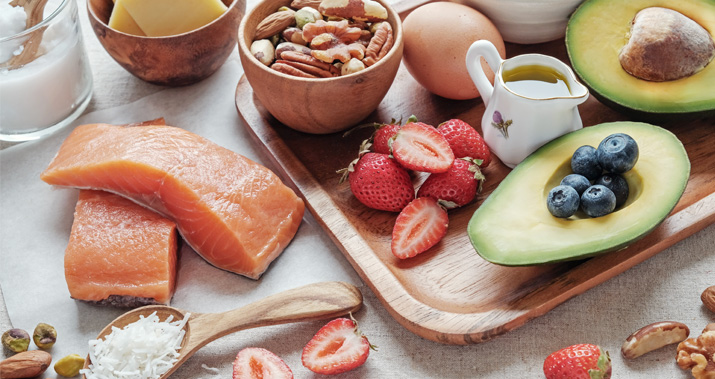
A lot of people are trying to trim carbs in their pursuit of lower weight and better health, but following a low carb diet can be very tricky. Just because something has few or no carbs doesn’t automatically mean it’s healthy — a lot of very highly processed foods are low in carbs, but still very high in sodium and preservatives. Fortunately, there are plenty of healthy, minimally processed, low carb foods out there.
What does “low carb” actually mean?
Foods are primarily made up of one of three sources of calories: carbohydrates, fats, or protein. Some foods contain a lot of starch or sugar, like fruit, grains, or table sugar. Others are primarily fat or protein. Low carb foods are foods that contain few or no carbohydrates. A low carb diet is generally considered to be a diet that allows for less than 100-150 grams of carbs per day. In order to induce ketosis, a state where the body burns fat instead of carbohydrates for fuel, most people will need to consume far fewer carbs — about 50 grams or less.
Low Carb Vegetables
Plants store energy as either starch or sugar, so finding vegetables that aren’t high in carbs can be tricky. Fortunately, these are all considered low carb:
- Alfalfa sprouts — less than .5g per 1 cup serving.
- Arugula — less than .5g per 1/2 cup serving.
- Asparagus — 2.4g per 6 spears.
- Bell peppers — 2.3g per 1/2 cup serving.
- Bok choy (raw) — .8g per 1 cup serving.
- Broccoli — 2g per 1 cup.
- Cauliflower — 2g per 1/2 cup.
- Celery — .8g per stalk.
- Cucumber — 1g per 1/2 cup serving.
- Iceberg lettuce — 1g per 1 cup.
- Mushrooms — 1g per 1/2 cup.
- Spinach — less than .5g per 1/2 cup.
- Tomatoes — 4g per medium tomato.
Low Carb Fruits
Most fruits are high in sugar, but a few types can fit into a low carb diet:
- Apricots — 5g per fruit.
- Lemons or Limes — 2g per ounce.
- Raspberries — 5g per cup.
- Blackberries — 7g per cup.
- Red grapefruit — 9g per 1/2 fruit.
Low Carb Dairy
Dairy is another source of hidden carbs. While it is high in protein and fat, it also contains natural sugars. These sources of dairy are considered low carb:
- Almond milk, plain unsweetened — less than 1g per 1 cup.
- Bleu cheese — 1g per ounce.
- Cheddar cheese — .5g per ounce.
- Egg — .6g per whole egg. .3g per yolk, .3g per white.
- Full-fat Greek yogurt, plain — 9g per 1 cup.
- Gouda cheese — .6g per ounce.
- Heavy cream — .5g per tablespoon.
- Mozzarella cheese — .6g per ounce.
- Ricotta cheese — .8g per ounce.
Low Carb Proteins
Most sources of animal protein are zero-carb, but some seafood is not. Red meat, veal, chicken, lamb, mutton, turkey, pork, duck, game meat, and offal all contain zero carbs. Here are some proteins that may require a little adjusting to fit into a low carb diet:
- Clams — 8.7g per 6 ounces.
- Lobster — 2g per 6 ounces.
- Mussels — 8.4g per 6 ounces.
- Oysters — 12.4g per 6 ounces.
- Scallops — 3.9g per 6 ounces.
- Squid — 7g per 6 ounces.
Low carb diets can make it feel challenging to get enough of a variety of nutrient-dense foods. By including enough low carb fruits and vegetables, as well as sources of fat and protein, you can ensure that you’re meeting your dietary needs in a healthy, satisfying way that still fits your lifestyle.